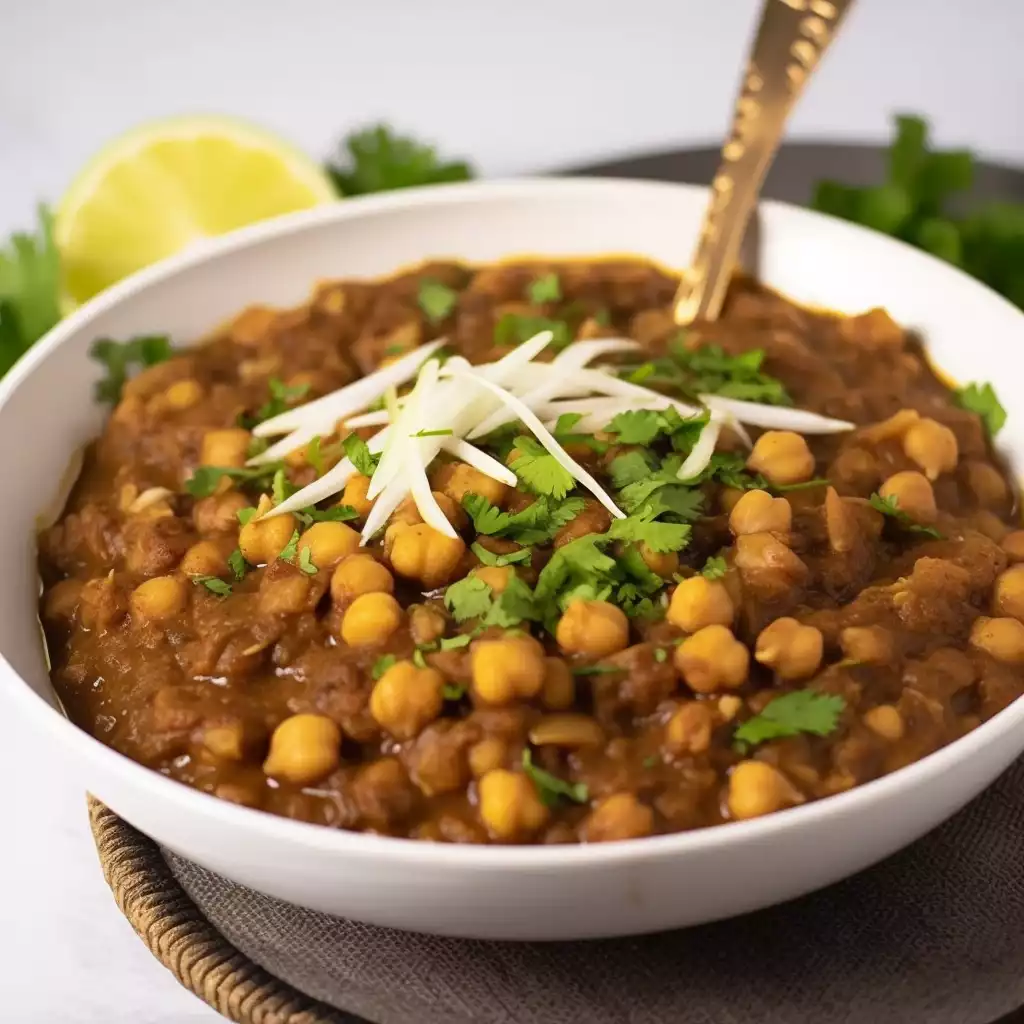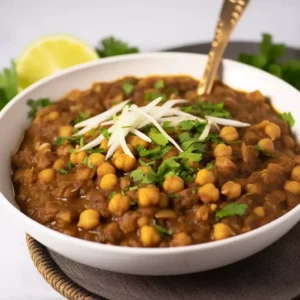
Chikar Chole, a beloved dish originating from the vibrant culinary landscape of Indian cuisine, embodies a harmonious blend of aromatic spices and wholesome chickpeas.
This dish is not only a celebration of flavor but also a testament to the rich cultural heritage that inspires its creation. While its precise origins may be elusive, its popularity is undeniable, gracing dinner tables and street food stalls alike across the Indian subcontinent.
Crafting Chikar Chole requires a delicate balance of ingredients and techniques, making it an ideal exploration for both novice and seasoned cooks. With its hearty texture and robust flavors, this dish promises to tantalize the taste buds and transport diners to the bustling streets of India, where the aroma of spices fills the air and culinary delights abound.
Whether enjoyed alongside fluffy rice, warm naan, or flaky roti, Chikar Chole is sure to satisfy cravings for comfort and adventure alike.
Expert Tip: For a richer flavor, toast the whole spices such as cumin seeds before adding them to the dish.
Chickpeas Canned: Canned chickpeas serve as the heart of this dish, providing a creamy texture and a rich source of plant-based protein.
Onion: Finely chopped onions lend a sweet and savory depth to the dish, enhancing its complexity of flavor.
Tomatoes: Pureed tomatoes contribute a tangy sweetness and help create a luscious gravy base for the Chikar Chole.
Garlic: Minced garlic infuses the dish with its pungent aroma and savory undertones, adding depth to the overall flavor profile.
Ginger: Grated ginger brings warmth and zing to the dish, complementing the spices and providing a subtle kick.
Green Chilies: Slit green chilies provide a gentle heat and a burst of freshness, balancing the richness of the other ingredients.
Cumin Seeds: Cumin seeds, when toasted, release a nutty aroma and add earthy notes to the dish.
Spices (Cumin Powder, Salt, Chilli Powder, Garam Masala, Turmeric, Dried Mango Powder): A medley of spices including cumin powder, salt, chili powder, garam masala, turmeric, and dried mango powder (amchur) create a symphony of flavors, elevating the dish with their aromatic and savory profiles.
Oil: Cooking oil serves as the medium for sautéing the aromatics and spices, imparting richness and helping to develop the dish’s depth of flavor.
Coriander: Freshly chopped coriander leaves, used as a garnish, add a pop of color and a refreshing herbal note to the finished dish.
Expert Tip: Adjust the amount of chili powder according to your preferred level of spiciness. You can always add more later if needed.
Chikar Chole is a versatile dish that can be enjoyed in various ways. Here are some serving suggestions to enhance your dining experience:
Expert Tip: Experiment with different garnishes such as sliced onions, lemon wedges, or fried shallots to add texture and flavor to the dish.
To reduce the spiciness of Chikar Chole, you can adjust the amount of chili powder and green chilies according to your preference. You can also add a dollop of yogurt or coconut milk to mellow out the heat.
Yes, you can use dried chickpeas for this recipe. However, you will need to soak them overnight and then cook them until tender before proceeding with the recipe.
Mashing some of the chickpeas helps thicken the gravy and adds a creamier texture to the dish. However, if you prefer a chunkier consistency, you can skip this step.
Yes, Chikar Chole can be made in advance and stored in an airtight container in the refrigerator for up to 3 days. Reheat gently on the stovetop or in the microwave before serving.
If you don’t have dried mango powder, you can substitute it with a splash of lemon juice or tamarind paste for a tangy flavor.
Here are some more recipes for you to enjoy! If you my recipes don’t forget to rate and leave a comment.
If you have any recipe suggestions, please do not hesitate to ask me. A great way to stay in contact with me is through Instagram, Facebook, Twitter and YouTube. Don’t forget to tag me @CookwithNabeela in your recipe photos!

Subscribe now to receive my latest recipes directly in your inbox. Stay up-to-date and never miss out!

I love to cook! I want to share with you my favourite, delicious family-friendly recipes. I want to inspire you to create fantastic food for your family every day.
Add your first comment to this post